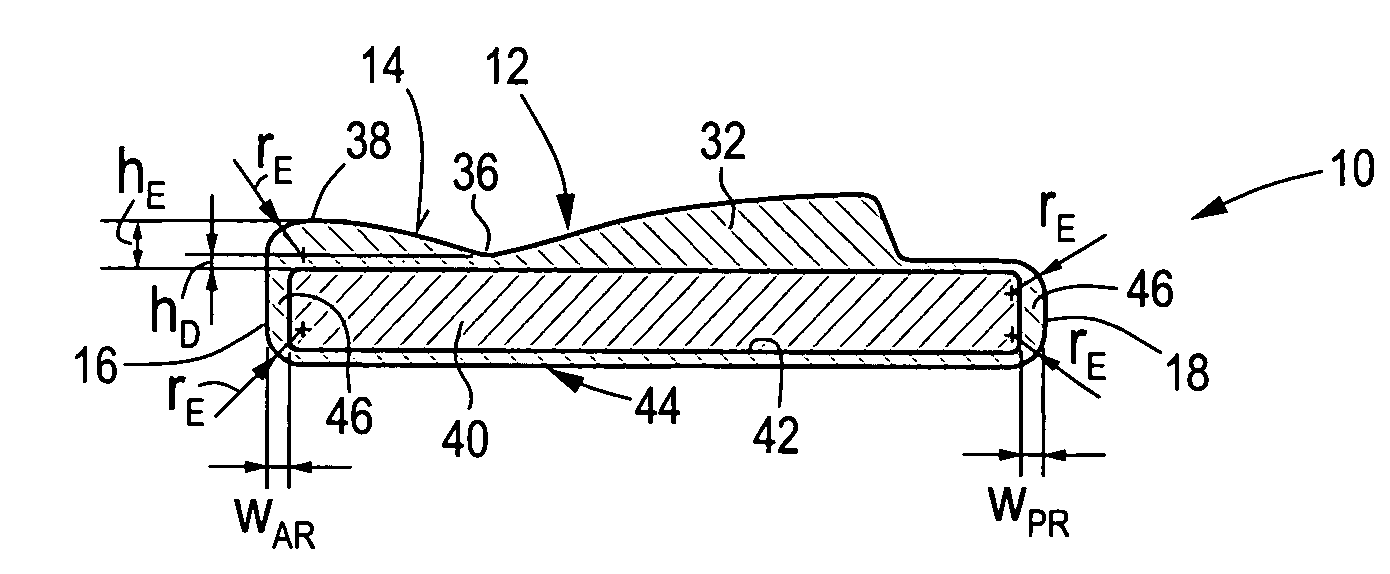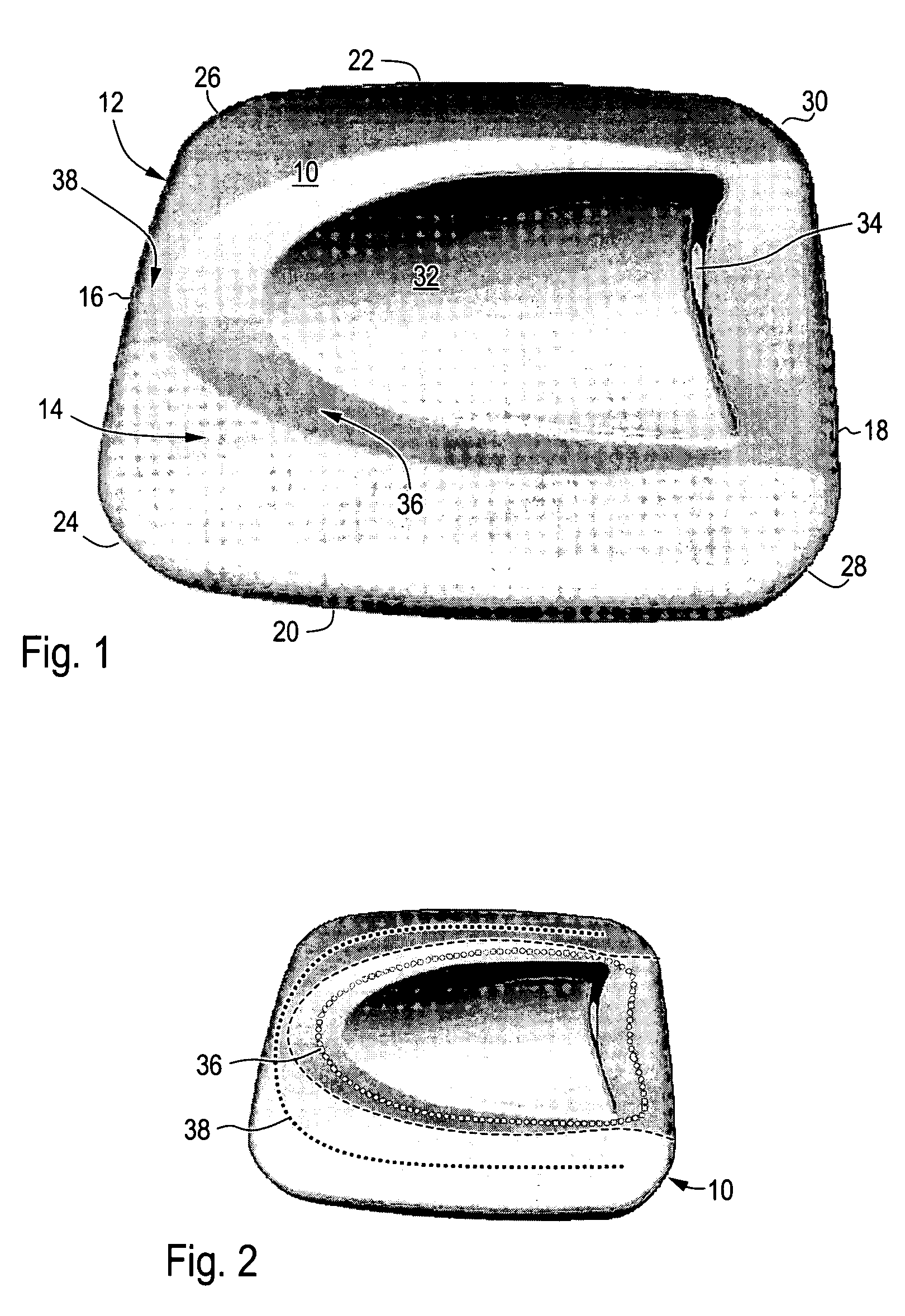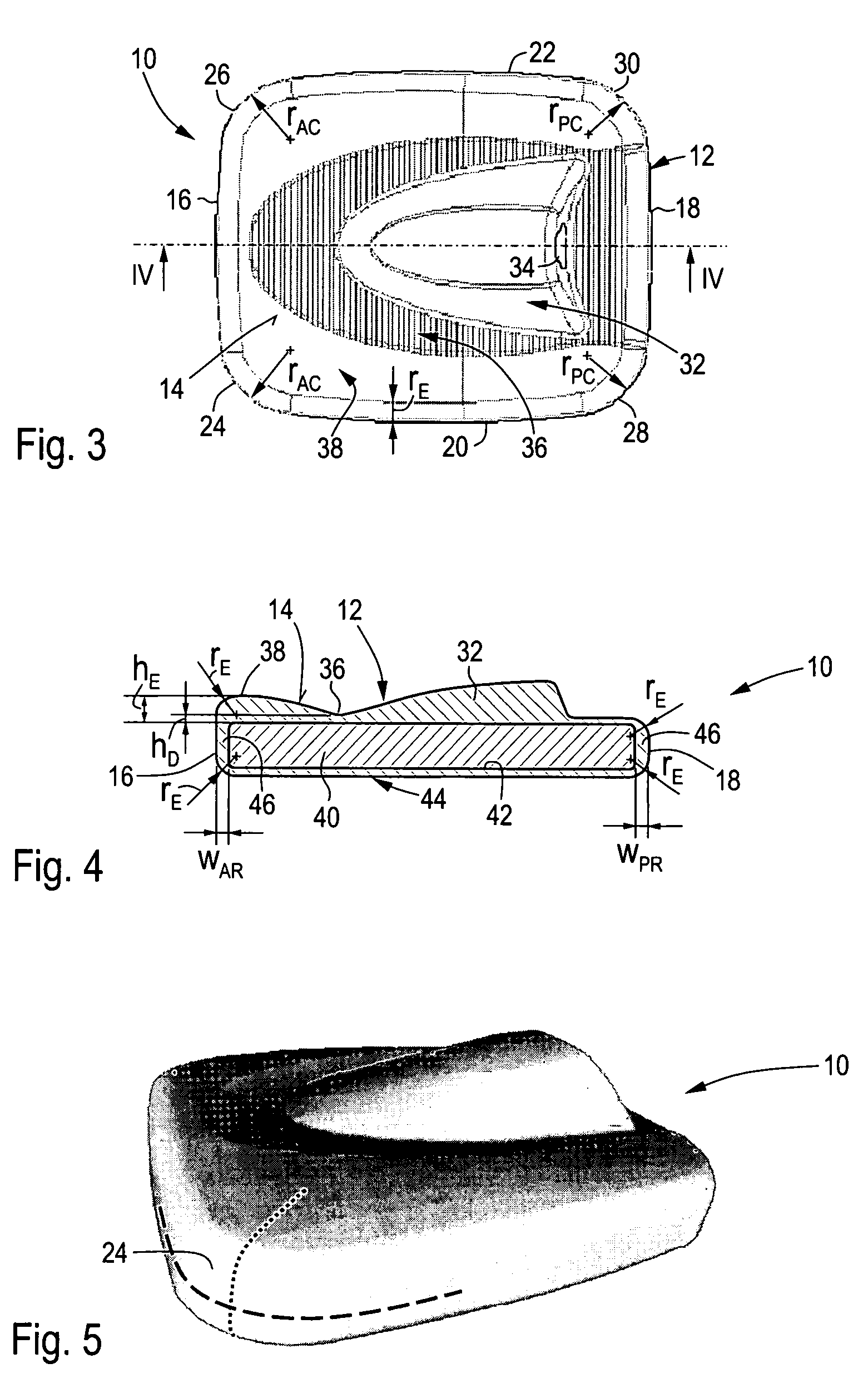Image sensor for dental intraoral radiography
- Summary
- Abstract
- Description
- Claims
- Application Information
AI Technical Summary
Benefits of technology
Problems solved by technology
Method used
Image
Examples
Embodiment Construction
[0024]The dental image sensor 10 shown in FIG. 1 comprises a housing 12 that encapsulates an image receptor (not shown). FIG. 1 depicts a back side 14 of the housing 12, i.e., the side that is opposite to a front side (not shown). The housing 12 has an anterior side 16, a posterior side 18 and two lateral sides 20, 22. The anterior side 16 merges into the lateral sides 20, 22 at two anterior corners 24, 26. Likewise, the posterior side 18 merges into the lateral sides 20, 22 at two posterior corners 28, 30.
[0025]The back side 14 of the housing 12 has an approximately central, elongated, spade-shaped cable connection dome 32. The cable connection dome 32 comprises a cable outlet 34 that is arranged on a steep wall of the cable connection dome 32 facing towards the posterior side 18. A cable (not shown) exits the housing 12 at the cable outlet 34. The cable serves for supplying the image sensor 10 with electricity and for transmitting image information obtained by the image sensor 10 ...
PUM
 Login to View More
Login to View More Abstract
Description
Claims
Application Information
 Login to View More
Login to View More - R&D
- Intellectual Property
- Life Sciences
- Materials
- Tech Scout
- Unparalleled Data Quality
- Higher Quality Content
- 60% Fewer Hallucinations
Browse by: Latest US Patents, China's latest patents, Technical Efficacy Thesaurus, Application Domain, Technology Topic, Popular Technical Reports.
© 2025 PatSnap. All rights reserved.Legal|Privacy policy|Modern Slavery Act Transparency Statement|Sitemap|About US| Contact US: help@patsnap.com



